Table of Contents
Once the decision to renovate a bathroom is made, it’s inevitable that vanity countertops will be a part of the renovation project. Considering how much use bathroom vanities receive, selecting durable and easy-to-clean materials is crucial to balancing practicality with what is aesthetically pleasing or fits the overall design scheme.
Below we’ll explore the myriad of materials that can be utilized for bathroom countertops, as well as the various qualities each material possesses.
[get_quote]
Natural Stone Countertop Materials
Considered one of the best countertop options, natural stone is durable and also one of the most sought after looks when it comes to home design. With a variety of natural stone countertops to choose from, any homeowner can find a material that complements their overall design vision and adds value to their bathroom and their home.
Granite
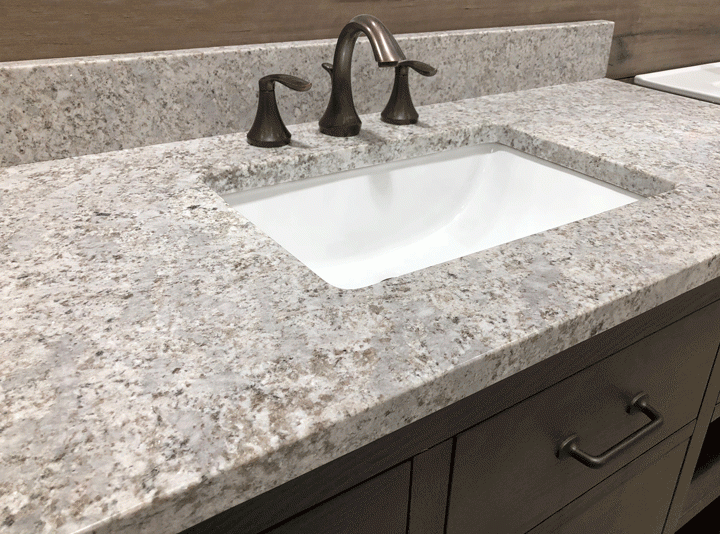
One of the more popular countertop materials, granite countertops are similar to marble, but has less veining and offer better heat resistance. For a kitchen that makes sense, but unless you carelessly leave a curling iron on a counter, heat resistance isn’t too much of a concern when picking bathroom countertops.
Nevertheless, granite does require routine maintenance and periodic sealing/refinishing. Still, granite will last a long time and keep your bathrooms looking sharp. Ideal applications for granite would be a master bathroom or high-traffic area.
Slate
Slate is a hard and durable natural stone countertop option, and one that resists staining better than marble or granite. Limited in color options, but affordable and sleek looking, slate offers a refined aesthetic and its texturing creates a feeling more grounded in nature than anything else. A unique and durable option, slate is worth considering especially if you opt for more earth tones or muted colors for your design aesthetic.
Marble
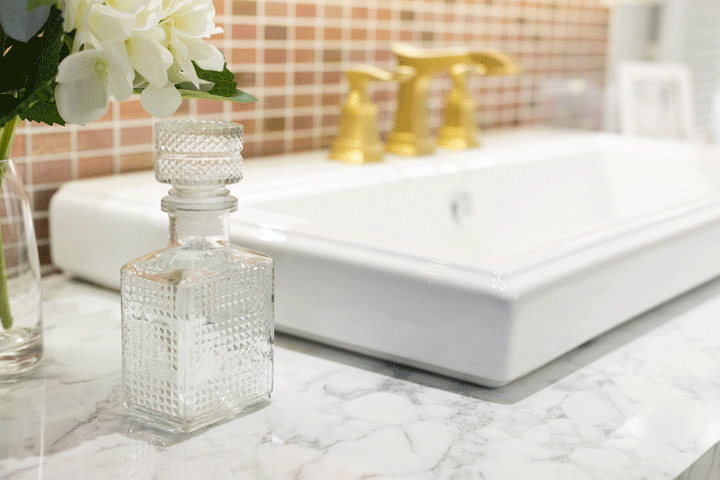
Hands down the most beautiful natural stone option, marble is known for its veining, which helps make each slab unique. While this can make sourcing other complementary design materials difficult, it’s always wise to remember it’s easier to design around your marble then it is to try and find a slab that fits your design.
Like granite, marble countertops also need regular maintenance and periodic sealing/refinishing and is best in areas where you want guests to get a sense of your style.
Soapstone
The best way to describe soapstone is like a combination of slate and marble. Nevertheless, soapstone (like slate) is easier to care for than marble or granite, however its veining is what is similar to marble. The overall texture resembles slate more than anything, and it being non-porous is why it would make a unique bathroom countertop material. It is slightly more expensive than slate, but cheaper than granite or marble.
Man-Made Countertop Materials
While not naturally occurring, these following countertop materials are produced by something that is naturally occurring: humans. And if there is one thing to say about our species is that we are capable of making some pretty impressive things from time-to-time. So let’s explore some man-made countertop materials that would be welcome in any home bathroom renovation.
Quartz
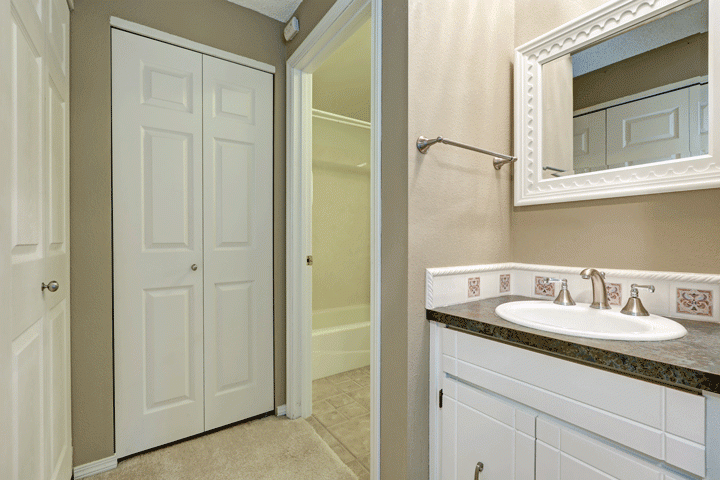
It’s a common misconception that quartz countertops are in the natural stone family. While real quartz is utilized in the fabrication of quartz countertops, resins and pigments are a crucial part of the process. That is why quartz, an extremely versatile and durable countertop material, lands in the man-made or synthetic section. Quartz is less brittle than other natural stone options, which makes it a good material for heavily utilized rooms like a bathroom. It also has more options in terms of colors and patterns, allowing for greater flexibility in terms of overall design vision.
While it is more expensive and less heat resistant (again not a key concern for bathrooms), that extra expense is largely due to the above positives of quartz.
Solid Surface
Produced by blending polyester and acrylic particles and bonding them via resins, solid surface countertops are one of the most cost effective and diverse material options available. As a result, solid state has become a popular option for homeowners as it offers them a wide range of looks and styles, is easy to maintain, and is stain resistant. Consider it the mid-tier option between laminate and natural stone.
One of the biggest perks of solid surface options for countertops is that they are not limited when it comes to the imagination. If you can conceive it, it can be made and matched to any design scheme. Additionally, these are quite durable and also good for high traffic areas.
[get_quote]
Glass
Countertops produced from crushed glass are currently trending when it comes to bathroom renovation projects. Similar to solid surface, crushed glass countertops are made by embedding recycled glass into clear acrylic, and sometimes concrete. However, the acrylic-produced crushed glass countertops are significantly stronger than the ones made with concrete. Additionally, the ones made with acrylic are also super easy to clean and maintain. As for price, it’s a little more than solid surface, but worth it if you’re after a sharp, modern look.
Laminate
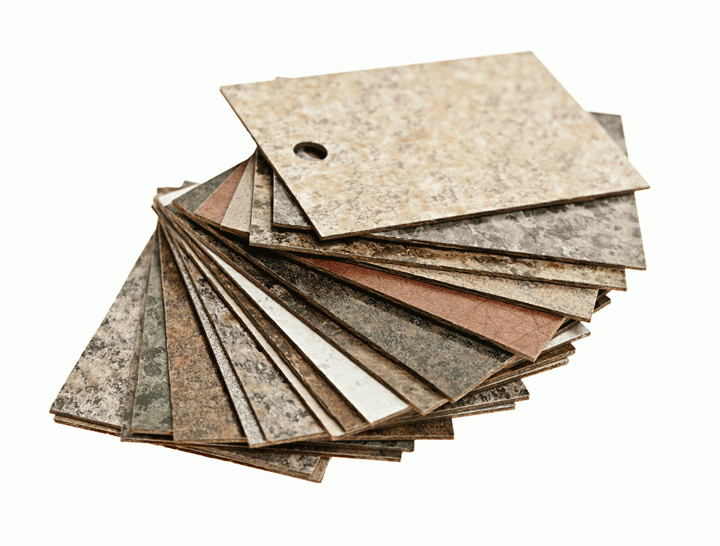
Long considered the lowest rung of countertop materials, laminates might still be among the cheapest, but technology has vastly improved their overall aesthetic. Many modern laminates can accurately mimic natural stones or other more sought after materials.
Made by layers of plastic being bonded to particleboard, laminate countertops are popular for price, general ease of maintenance and installation.
Ceramic/Porcelain Tile
Tile is perhaps an old classic when it comes to bathroom countertop options, and it’s still as utilized today as it was a decade ago. A big reason why is because tile is one of the more friendly DIY options, it's light on the wallet, and offers up a variety of design options due to a variety of tile patterns and even the option to do out-of-the-box designs or mosaics. The biggest drawback is that tiles can be cracked if impacted too hard and grout can become discolored over time due to use.














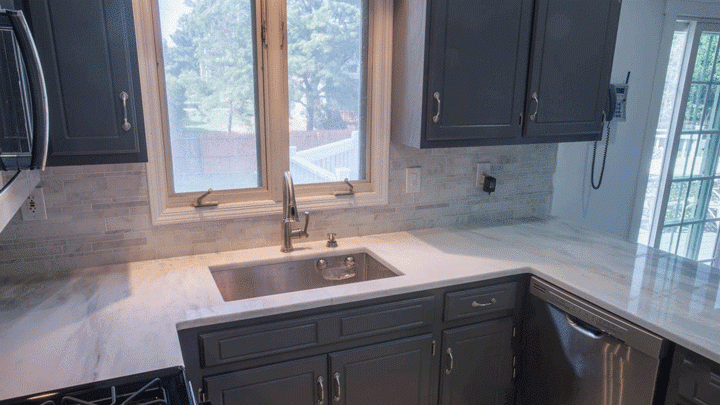
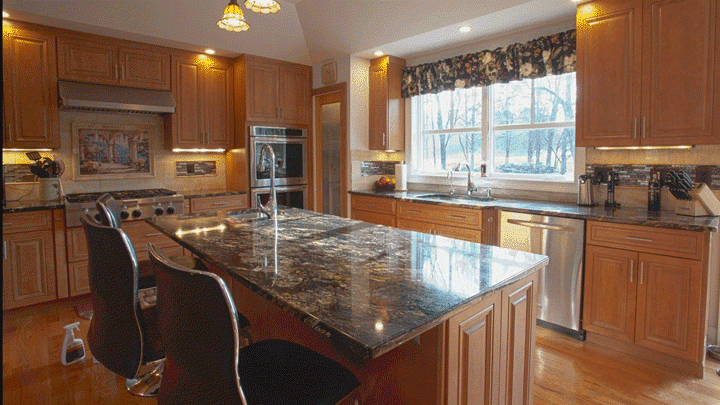
 The article helped me immensely
The article helped me immensely
 I’m now more informed on the subject
I’m now more informed on the subject
 I have questions about Marble.com
I have questions about Marble.com
 The article was not accurate at all
The article was not accurate at all
 There is a serious lack of information
There is a serious lack of information
 I have questions about Marble.com
I have questions about Marble.com